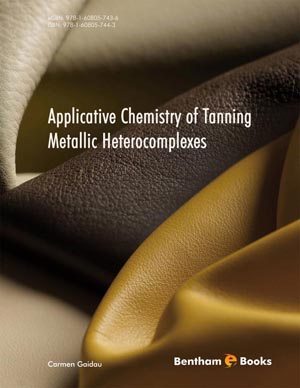Abstract
Developing complex metallic heterocomplexes requires knowledge of synthesis methods based on oxidation-reduction reactions, complexation to boiling point or basification of mixtures of salts of chromium, aluminum, iron, zirconium or titanium, the main tanning metals for natural leather. The purpose of these syntheses is developing heterocomplexes with higher stability to alkali than that of metal salts from which the natural leather tanning properties derive. Chromium-aluminum salts are the only heterocomplexed salts that are currently commercially available, with restricted use to certain types of applications related to maintaining a lighter colour of leather and improved polishing ability. Knowing the possible structure of complex metallic heterocomplexes obtained is a complicated endeavor due to the polydispersity of tanning solutions and the difficulty of separating the tanning heterocomplex in crystal form. IR analyses enabled the formulation of hypotheses on the structure of chromiumzirconium and aluminum-titanium heterocomplexes, while X-ray diffraction of chromezirconium- cerium crystal enabled the identification of the role of sulfate ion of ligand tridentate and not bidentate, as it was previously thought, the identification of oximetallic O-Cr-O bond length of 10Å, identical to the distance between the collagen macromolecules forming the three-macromolecule helix. The close connection between the synthesis method and the stability of tanning metallic heterocomplexes is highlighted by examples of research in the field. The topicality of tanning metallic heterocomplexes is emphasized by their superior properties compared to organic tanning variants, both in terms of economy and technology, and the greater possibility of combining metals or organic ligands to develop structures with different collagen crosslinking properties.
Keywords: Synthesis methods, Chromium-aluminum tanning agents, Tanning heterocomplexes, Structure of heterocomplexes, Properties of heterocomplexes.






















